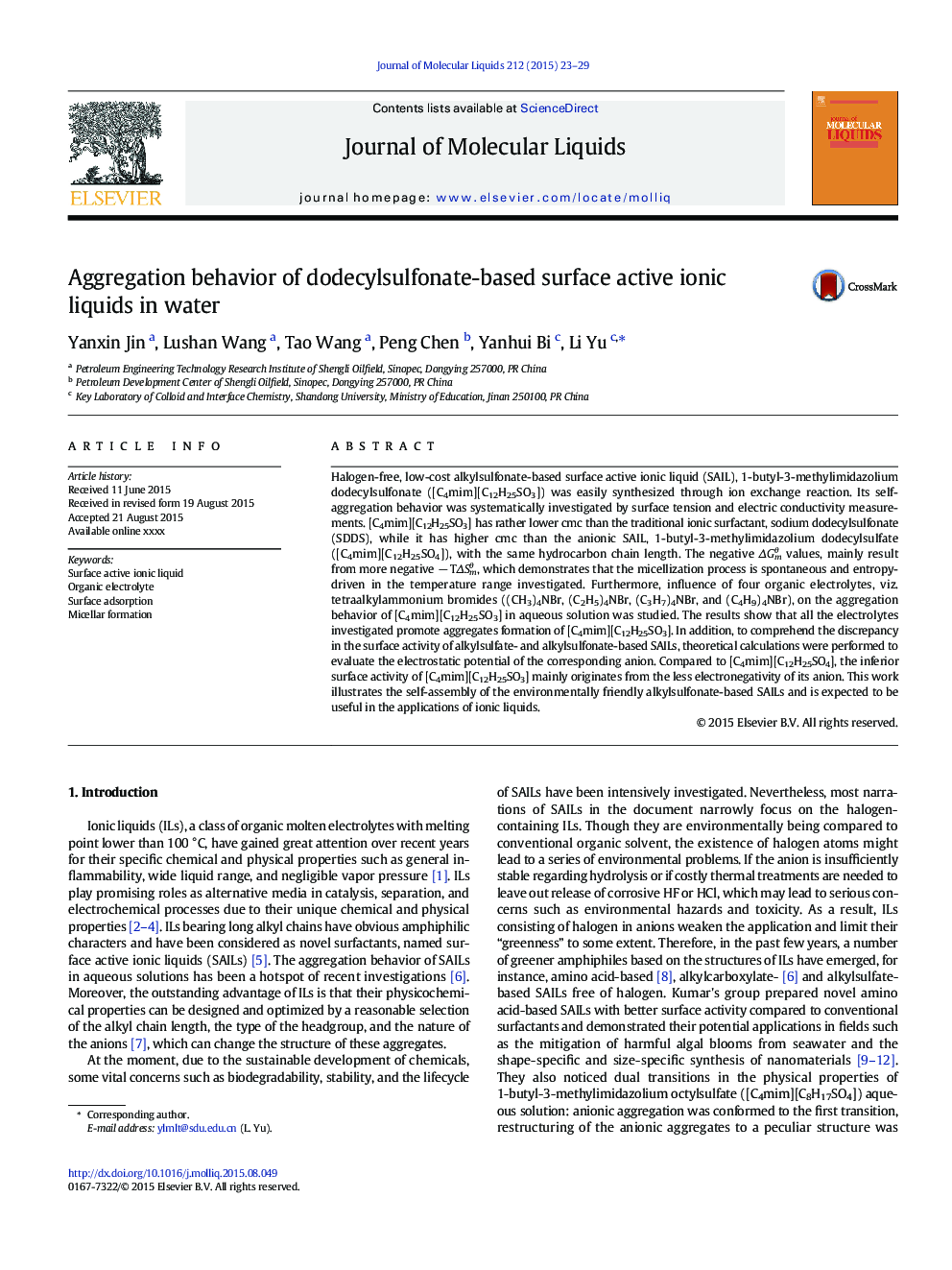| Article ID | Journal | Published Year | Pages | File Type |
|---|---|---|---|---|
| 5410501 | Journal of Molecular Liquids | 2015 | 7 Pages |
Abstract
Halogen-free, low-cost alkylsulfonate-based surface active ionic liquid (SAIL), 1-butyl-3-methylimidazolium dodecylsulfonate ([C4mim][C12H25SO3]) was easily synthesized through ion exchange reaction. Its self-aggregation behavior was systematically investigated by surface tension and electric conductivity measurements. [C4mim][C12H25SO3] has rather lower cmc than the traditional ionic surfactant, sodium dodecylsulfonate (SDDS), while it has higher cmc than the anionic SAIL, 1-butyl-3-methylimidazolium dodecylsulfate ([C4mim][C12H25SO4]), with the same hydrocarbon chain length. The negative ÎGmθ values, mainly result from more negative â TÎSmθ, which demonstrates that the micellization process is spontaneous and entropy-driven in the temperature range investigated. Furthermore, influence of four organic electrolytes, viz. tetraalkylammonium bromides ((CH3)4NBr, (C2H5)4NBr, (C3H7)4NBr, and (C4H9)4NBr), on the aggregation behavior of [C4mim][C12H25SO3] in aqueous solution was studied. The results show that all the electrolytes investigated promote aggregates formation of [C4mim][C12H25SO3]. In addition, to comprehend the discrepancy in the surface activity of alkylsulfate- and alkylsulfonate-based SAILs, theoretical calculations were performed to evaluate the electrostatic potential of the corresponding anion. Compared to [C4mim][C12H25SO4], the inferior surface activity of [C4mim][C12H25SO3] mainly originates from the less electronegativity of its anion. This work illustrates the self-assembly of the environmentally friendly alkylsulfonate-based SAILs and is expected to be useful in the applications of ionic liquids.
Related Topics
Physical Sciences and Engineering
Chemistry
Physical and Theoretical Chemistry
Authors
Yanxin Jin, Lushan Wang, Tao Wang, Peng Chen, Yanhui Bi, Li Yu,
